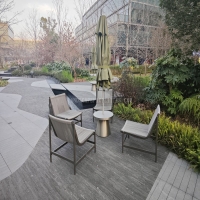Welcome to the website for landscape facilities products and knowledge.
What are the best practices for transporting and handling landscape bar counters during delivery?
The successful installation of a stunning landscape bar counter begins long before it reaches your home or job site. Its journey, from the fabrication shop to its final destination, is a critical phase where improper handling can lead to costly damage, delays, and disappointment. Ensuring these heavy, often fragile, stone surfaces arrive in pristine condition requires meticulous planning and adherence to proven best practices. This guide outlines the essential steps for safely transporting and handling landscape bar counters during delivery.
The foundation of safe transport is expert packaging and crating. A landscape bar counter must never be transported naked. The first layer of defense is a high-quality, non-abrasive blanket wrap, which protects the polished or honed surface from micro-scratches. For added protection, especially for delicate edges and mitered corners, custom-fitted foam edge protectors are indispensable. The fully wrapped counter should then be securely placed into a rigid, A-frame wooden crate. This crate must be built to the exact dimensions of the counter to prevent any shifting during transit. The wood should be sturdy, and the counter should be strapped or blocked inside the crate to eliminate movement.
Choosing the right vehicle and securing the load properly are the next crucial steps. The transport vehicle must have a completely flat and clean bed. A flatbed truck or an enclosed box truck is ideal, with the latter offering superior protection from the elements and road debris. The crated counter must be loaded onto the truck bed carefully, always kept flat and never placed on its side. Using heavy-duty straps and load-bearing bars, the crate must be securely fastened to the truck's anchor points. It is vital to check that the straps are tight and that there is no possibility for the crate to slide, bounce, or tip over during acceleration, braking, or cornering.
The actual handling of the counter, during both loading and unloading, demands a disciplined approach. This is not a one or two-person job. A team of at least three or four strong individuals is mandatory for all but the smallest slabs. Team members must be equipped with the proper tools, primarily suction cup lifters designed for stone. These tools provide a secure grip and allow for even distribution of the immense weight. Before lifting, the team must have a clear plan for the path of movement, ensuring all obstacles are removed and the path is clear. All movements should be coordinated, slow, and deliberate. Never drag or slide the counter; always lift and carry. For moving the counter over longer distances on-site, a sturdy, padded A-frame dolly is recommended.
Finally, a comprehensive pre-delivery plan is a non-negotiable best practice. This involves a site inspection before delivery day to identify potential challenges like narrow doorways, tight staircases, or uneven pathways. Communicating this plan with the client and the installation team ensures everyone is prepared. The delivery team should have all necessary equipment on hand, and the weather should be considered—avoid delivering in rain or snow, which can make surfaces slippery and hazardous. By planning for every step of the journey, from the truck to the installation point, you mitigate the vast majority of risks associated with transporting these beautiful but demanding pieces.
Related search:

Recommendation
Metal structure rattan chair without armrests for single person, with woven seat and backrest.